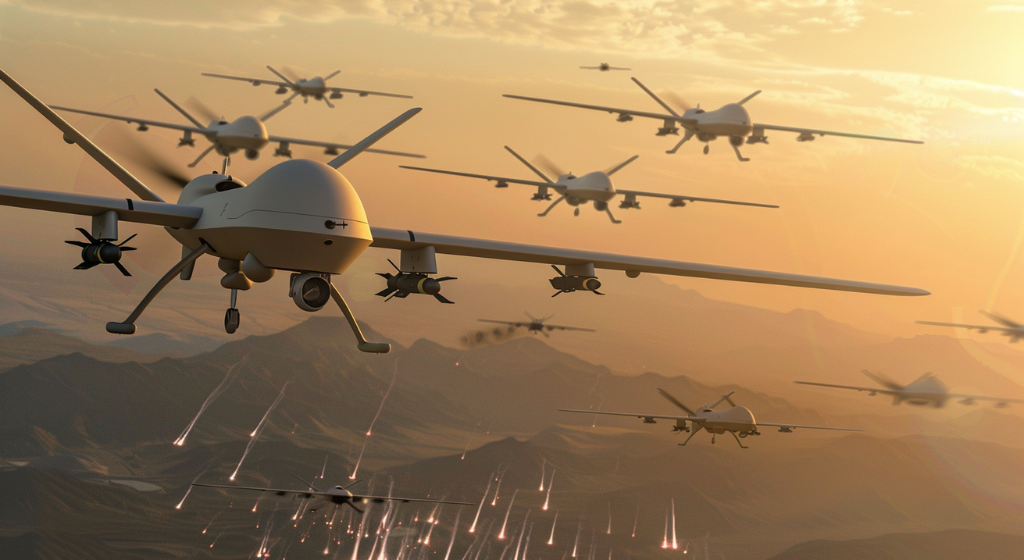
In the unfolding conflict in Ukraine, drones have evolved from specialized counterterrorism instruments, once predominantly under the control of the U.S. and its allies, to become a widespread and integral component of contemporary warfare. (Source: Image by RR)
The Pentagon Developed an Ambitious Plan for AI-Enabled, Replaceable Drones
The Pentagon is embracing the transformative power of military drones, influenced significantly by the innovations and tactical applications of drones observed in the Ukraine conflict. This shift in strategy comes as military and technological advancements make drones an increasingly central element in modern warfare, with their potential likened to historical military revolutions. The experiences from Ukraine, where drones have been used effectively for surveillance, tactical strikes, and even affecting naval operations, underscore their value in enhancing battlefield capabilities while presenting a cost-effective solution compared to traditional military hardware.
Recognizing the potential for drones to level the playing field against more technologically advanced foes, the Pentagon’s strategy involves the development of thousands of AI-enabled, easily replaceable drones under a plan called Replicator. As reported in vox.com, this initiative aims to counteract adversaries’ numerical and technological advantages by deploying large numbers of autonomous systems that can be quickly produced and replaced, emphasizing the importance of mass and adaptability in future conflicts, particularly with China in mind. The approach signals a significant shift from relying on technological superiority to embracing mass and flexibility, acknowledging that the future of warfare will be as much about quantity and adaptability as it is about cutting-edge technology.
Replicator’s ambitious goals highlight the Pentagon’s response to the changing nature of warfare and the strategic challenges posed by potential conflicts with major powers like China. The plan involves the rapid deployment of these drones and requires a fundamental change in the Pentagon’s procurement and development processes to accommodate the swift adaptation to emerging technologies and combat requirements. This shift underscores the recognition of drones’ strategic value and the need to innovate quickly in a rapidly evolving technological and geopolitical landscape.
The implications of the Pentagon’s pivot towards drones extend beyond just tactical adjustments. They signify a broader strategic recognition of how autonomous and semi-autonomous systems will shape future military conflicts, requiring new development, deployment, and engagement strategies. As the Pentagon seeks to navigate these challenges, the lessons from Ukraine and other conflicts serve as valuable insights into the potential and pitfalls of drone warfare, emphasizing the need for speed, adaptability, and a reimagined approach to military superiority in the 21st century.
read more at vox.com







Leave A Comment